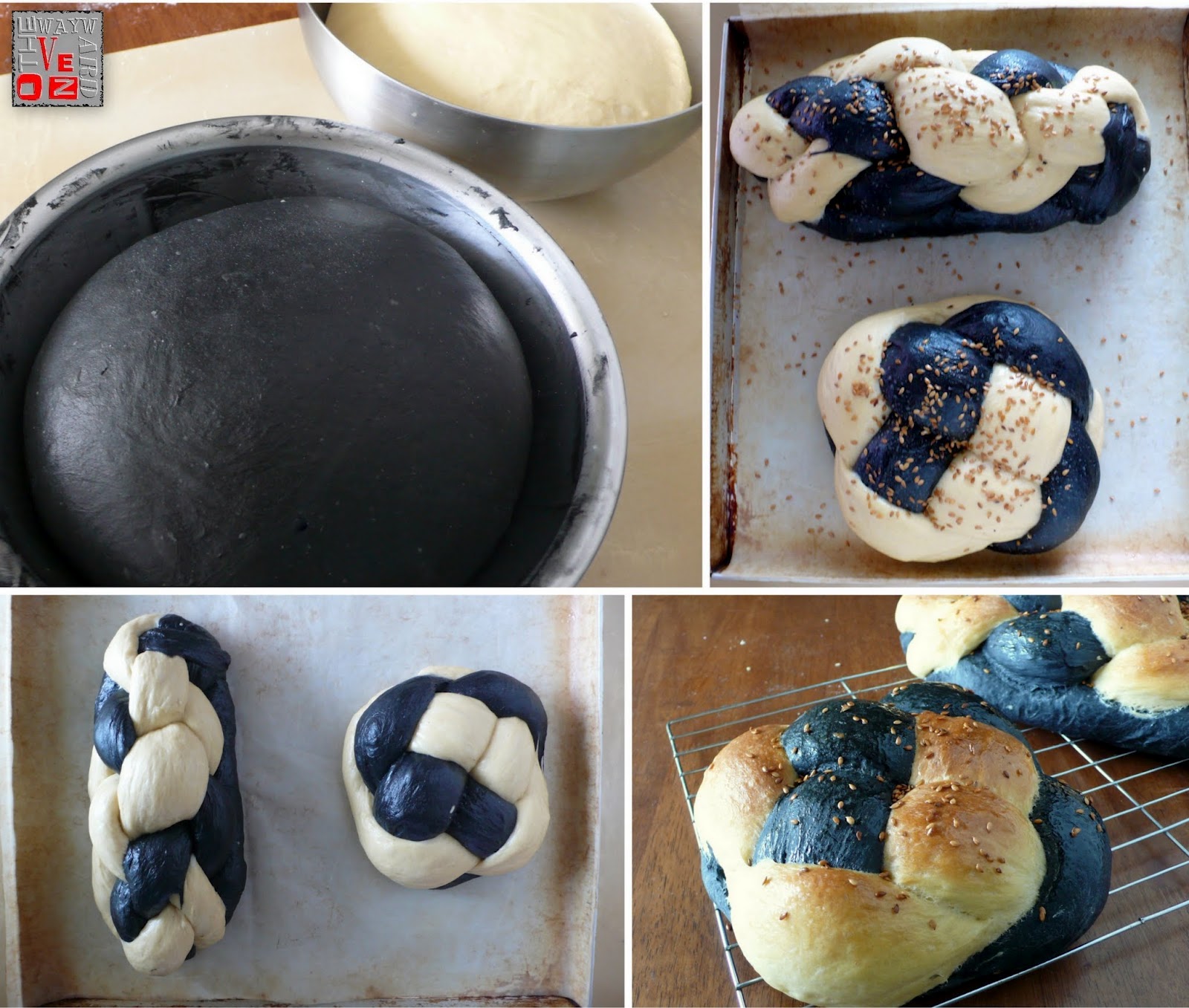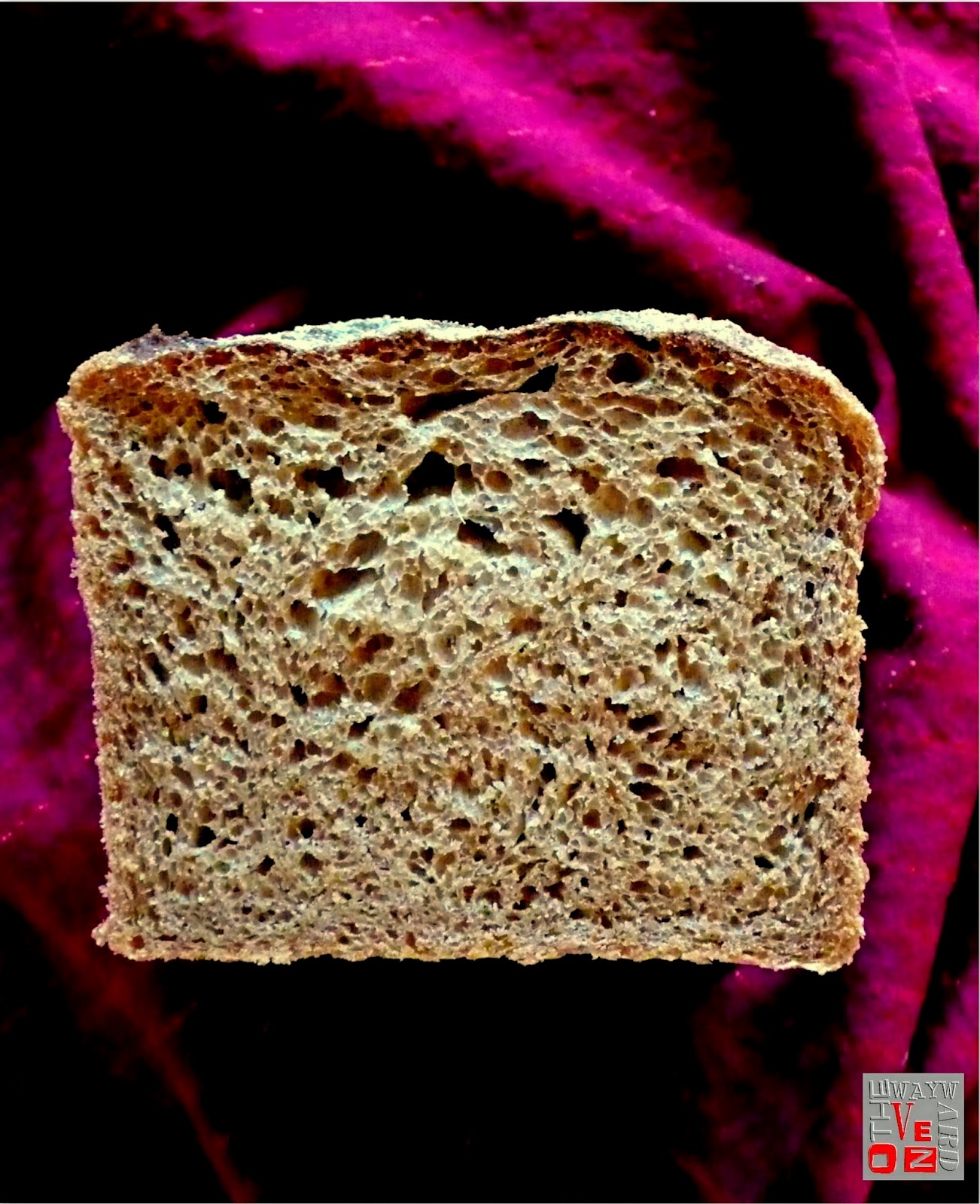| SOURDOUGH BANANA BREAD WITH WALNUTS |
Well, I thought I might have let my one-and-a-half-year-old mother starter die when I took it out of the fridge after weeks and weeks of neglect, refreshed it and it still lay there like sludge the next day.
So I discarded half of it, fed it again and the next day, there was one bubble. One!
Let's do it one more time, I told myself, and if it remained sluggish, it was so long starter.
The next morning, it had climbed up the sides of the glass jar and was foaming like a bubble bath.
There's life in this old thing yet! And I wasn't talking about myself.
Part of the refreshed starter went into making bagels for the June Sourdough Surprises project (a post for June 20), and the other half was used for a banana bread.
Looking around online, I found this recipe for sourdough banana bread at The Fresh Loaf (the recipe lists amounts in cups). After reading through the thread that followed, I took some of the suggestions and decided to change the butter to coconut oil, replace half the white flour with whole wheat and include chopped walnuts.
I was very pleased with the result – burned-the-roof-of-my-mouth-on-a-hot-slice-but-it-didn't-matter pleased. This banana bread rose higher than any sourdough-free ones that I'd baked before. It was quite light, yet substantial at the same time. Made partly with whole grains (I refreshed the starter with whole wheat, but it was originally made with rye flour), coconut oil and walnuts, this cake/bread is low-fat and even nutritious. Also, there's less refined sugar in it since I used very ripe bananas. They had speckled at room temperature and then the skin turned completely black after a few days in the fridge. The natural sugars in the bananas produced such a beautiful fruity aroma as the bread baked and formed a lovely caramelised crust.
It's hard to stay away from sweet snacks and desserts, but at least with this bread, I am not lethargic after the sugar high wears off. Instead, I'm as peppy as a well-fed sourdough starter.
| This bread is filling so resist the temptation to cut thick slices |
Makes 1 large loaf, about 15 slices
110g all-purpose flour
110g whole wheat flour
1 tsp baking powder
½ tsp baking soda
1 tsp salt
60g coconut oil
100g-150g caster sugar (amount depends on sweetness of bananas)
1 egg
225g mashed banana (about 3 overripe bananas)
225g refreshed 100%-hydration sourdough starter
90g walnuts, chopped
Grease a 20cm by 9cm loaf pan and preheat the oven at 180°C.
Sift the flours, baking powder, baking soda and salt together three times. Set aside.
In a mixing bowl, beat the coconut oil and sugar together until combined. Add the egg and beat until smooth.
Stir in the mashed banana and sourdough starter.
Fold in the flour mixture and finally, the walnuts.
Pour the batter into the prepared tin and bake for 50-60 minutes until a toothpick inserted in the centre of the loaf comes out clean.
Cool in the tin on a wire rack for 10 minutes, then remove from tin and place on the wire rack to cool for as long as you can resist.
















